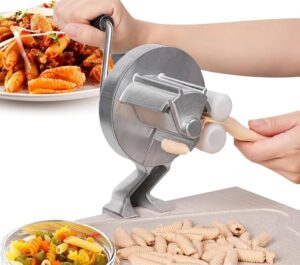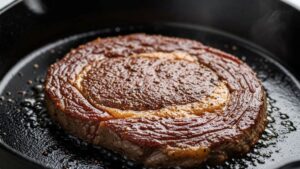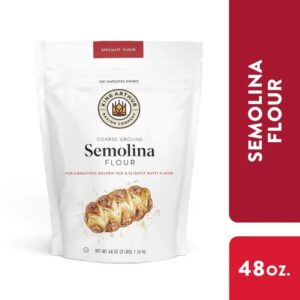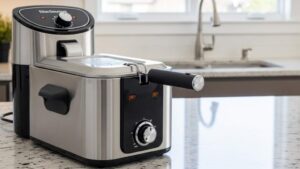Rolling Out Pasta Dough With Semolina Flour in a Machine: The Ultimate Guide to Perfect Pasta
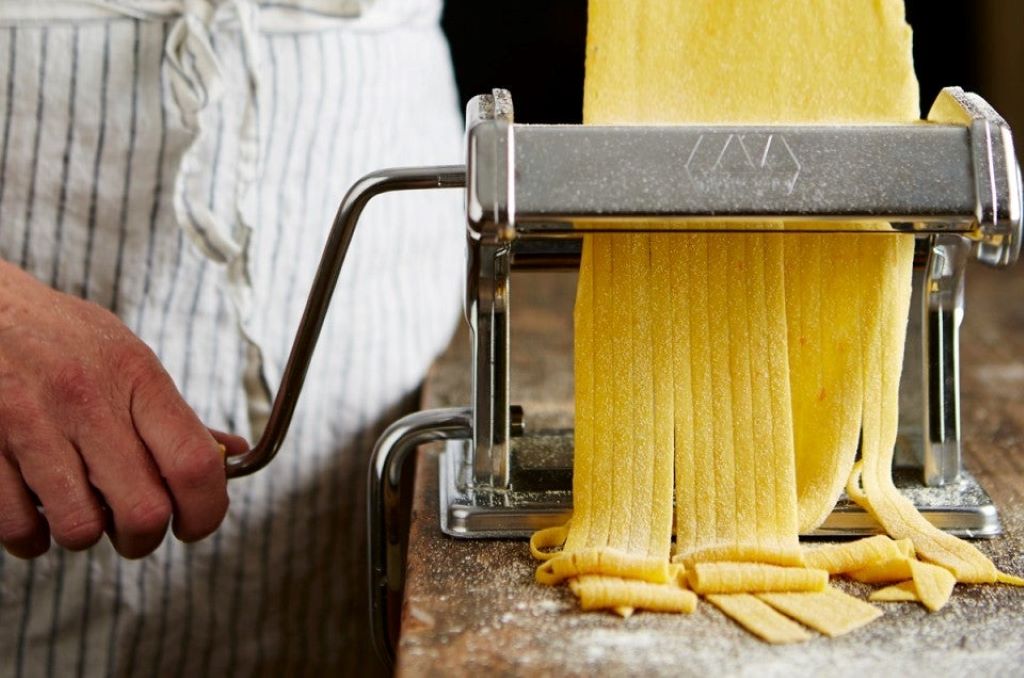
Semolina flour, made from durum wheat, is a staple in traditional Italian pasta recipes. Known for its slightly gritty texture and golden hue, it’s what gives pasta its signature firmness and elasticity. Rolling out pasta dough with semolina flour in a machine unlocks endless possibilities for creating smooth sheets of dough, perfect for lasagna, tagliatelle, ravioli, and more.
Using a machine simplifies what can be a labor-intensive process, ensuring even thickness and professional-level results. This guide offers actionable tips, the science behind semolina flour, and expert techniques to elevate your pasta-making experience. Don’t forget to explore Smartpastamaker, your go-to resource for mastering pasta-making tools and techniques.
Choosing the Right Pasta Machine: Manual vs. Electric Options
The first step in perfecting your pasta dough is selecting the right machine. Manual pasta rollers, with their hand-crank mechanism, allow for better control over dough thickness, while electric machines are faster and more convenient.
Manual machines, such as the Marcato Atlas 150, are beloved by purists who value the tactile connection to their craft. Electric models, like the Philips Pasta Maker, are ideal for busy cooks who want results with minimal effort. Regardless of the type, ensure the machine has adjustable settings for rolling the dough to various thicknesses.
Pro Tip: Always invest in a high-quality machine with stainless steel rollers to ensure durability and clean cuts.
Preparing the Perfect Pasta Dough with Semolina Flour
The Science Behind Semolina
Semolina flour’s coarse grind absorbs water differently from all-purpose flour, creating a dough that’s less sticky and easier to work with. Its high protein content (approximately 13%) forms strong gluten networks, essential for pasta that holds its shape during cooking.
Ingredients and Ratios
For a traditional pasta dough, you’ll need:
- 200 grams of semolina flour
- 2 large eggs (room temperature)
- A pinch of salt
Optional: You can add a tablespoon of olive oil for added elasticity and flavor.
Method:
- Create a mound of semolina flour on a clean surface, making a well in the center.
- Crack the eggs into the well, then use a fork to gradually incorporate the flour.
- Knead the dough for 8–10 minutes until smooth and elastic. Wrap it in plastic and let it rest for 30 minutes to relax the gluten.
Techniques for Rolling Out Pasta Dough With Semolina Flour in a Machine
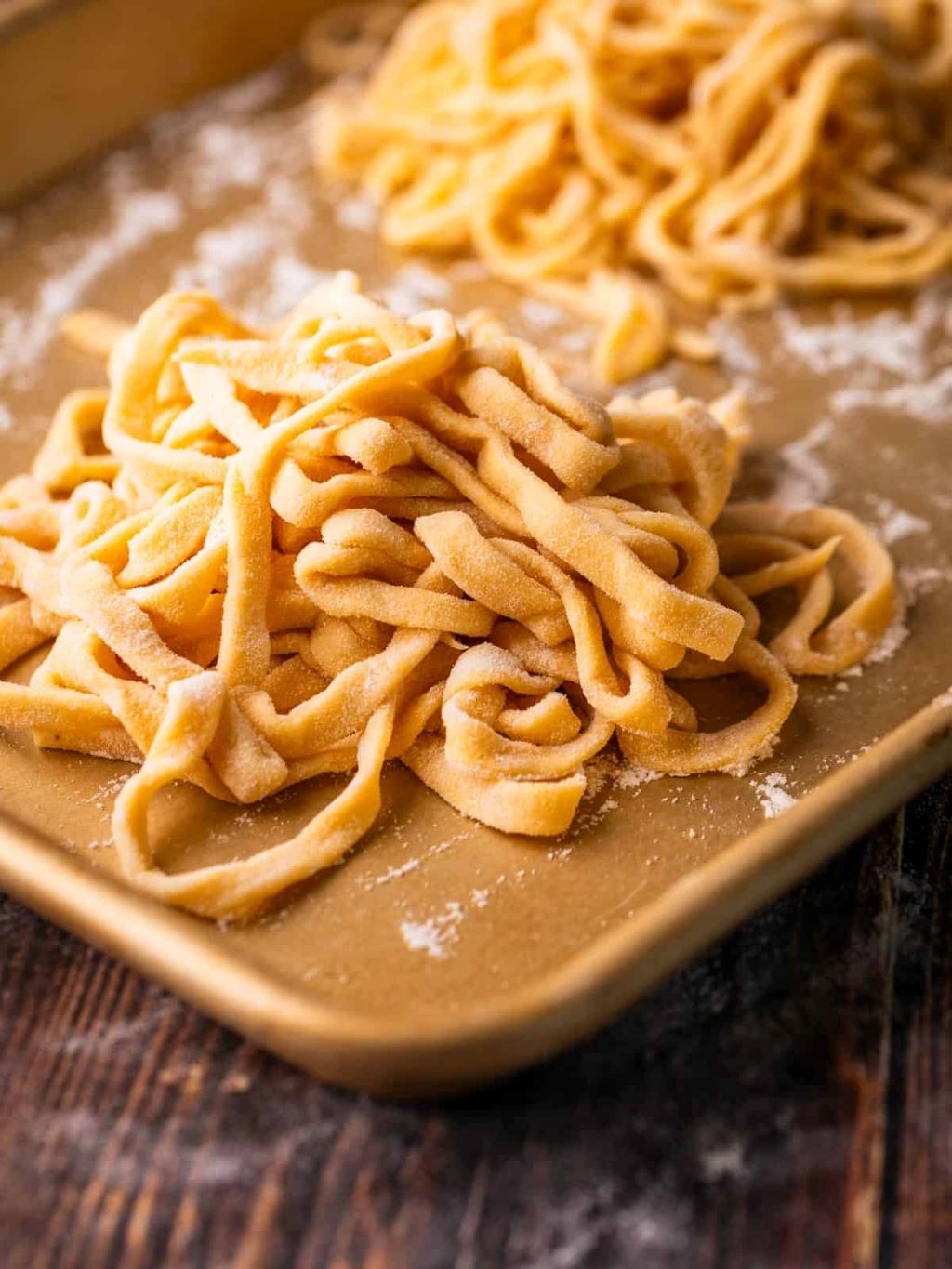
Once your dough has rested, it’s ready to be transformed into pasta sheets.
Step 1: Divide and Flatten
Cut the dough into smaller sections to make it more manageable. Flatten each section slightly with your hands before feeding it into the machine.
Step 2: Adjust the Machine Settings
Set the rollers to the widest setting for the first pass. Gradually decrease the setting with each pass until you reach the desired thickness.
Step 3: Flour Liberally
Dust the dough and the rollers with semolina flour to prevent sticking. Unlike all-purpose flour, semolina flour resists clumping and adds a pleasant texture to the pasta.
Step 4: Consistency is Key
Pass the dough through the rollers multiple times, folding it in half after each pass. This process develops gluten and ensures an even texture.
When using these tools, lightly dust the roller with semolina flour to prevent sticking. Roll the dough gently yet firmly to achieve a clear imprint. Learn more about the techniques of using wooden pasta roller with designs on it, and elevate your pasta’s aesthetic appeal effortlessly.
Troubleshooting Common Issues in Rolling Out Pasta Dough
Why is My Dough Tearing?
Tearing often occurs when the dough is too dry. Add a few drops of water and knead it again to restore elasticity.
Why is My Pasta Sticking to the Machine?
Excess moisture or insufficient flouring can cause sticking. Always dust both the dough and the machine liberally with semolina flour.
Why is My Pasta Uneven?
Uneven sheets indicate inconsistent rolling. Fold the dough and pass it through the machine several times to smooth out imperfections.
Cooking Fresh Pasta: Best Practices
Fresh pasta made with semolina flour cooks faster than dried varieties, usually within 2–3 minutes. Boil it in salted water to enhance flavor and toss it immediately with your favorite sauce.
Pro Tip: Reserve a cup of pasta water to adjust the sauce consistency. The starch in the water helps sauces cling better to the pasta.
Creative Variations and Flavored Pasta Dough
Experimenting with flavors adds a creative twist to your pasta. Consider these variations:
- Spinach Pasta: Blend steamed spinach into the dough for a vibrant green hue.
- Beet Pasta: Add roasted beet puree for an earthy, sweet flavor.
- Herb-Infused Pasta: Mix finely chopped herbs like basil or parsley into the dough for a fresh, aromatic touch.
Caring for Your Pasta Machine
To prolong the life of your pasta machine, follow these maintenance tips:
- Never immerse the machine in water; use a dry brush to clean flour and dough remnants.
- Apply a small amount of food-safe oil to the moving parts to keep them functioning smoothly.
- Store the machine in a dry, dust-free area to prevent corrosion.
Why Homemade Pasta Is Worth the Effort
Homemade pasta offers unparalleled texture and flavor that store-bought varieties can’t match. Plus, the process of rolling out pasta dough with semolina flour in a machine is a rewarding experience that connects you to a centuries-old culinary tradition.
Whether you’re crafting a simple fettuccine or a show-stopping ravioli, the combination of semolina flour and a pasta machine guarantees consistent, high-quality results.
You Might Enjoy: What Color Is Bad Butter?
FAQs
How do I know if my dough has been kneaded enough?
The dough should feel smooth and slightly elastic, springing back when gently pressed with your finger.
Can I use a pasta machine for gluten-free dough?
Yes, but gluten-free dough tends to be more fragile. Roll it carefully and avoid making it too thin.
Is semolina flour better than all-purpose flour for pasta?
Yes, semolina flour’s high protein content and gritty texture make it superior for pasta-making, ensuring better firmness and elasticity.
Can I freeze fresh pasta?
Absolutely. Arrange the pasta in a single layer on a baking sheet, freeze until firm, and then transfer it to an airtight container.
What’s the best sauce for semolina pasta?
Semolina pasta pairs well with hearty sauces like Bolognese, carbonara, or creamy Alfredo.
How can I tell if my pasta machine needs cleaning?
If the rollers aren’t turning smoothly or dough is sticking excessively, it’s time for a thorough cleaning.
Conclusion
Rolling out pasta dough with semolina flour in a machine is both an art and a science. With the right tools, techniques, and a touch of creativity, anyone can create restaurant-quality pasta at home. Whether you’re a novice or a seasoned chef, this guide equips you with everything you need to succeed. So, dust off that pasta machine, grab some semolina flour, and get ready to impress your family and friends with your homemade culinary creations.

